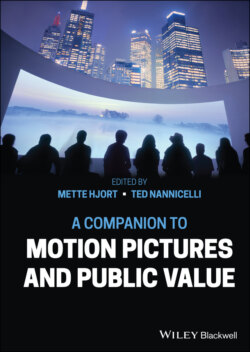Читать книгу A Companion to Motion Pictures and Public Value - Группа авторов - Страница 61
Conclusion
ОглавлениеEarly in this chapter we made a distinction between creativity and authorship in filmmaking. We noted that conflation of these two things and ascribing sole creative authorship to directors may be doing harm by obscuring or misapprehending the ways that films are “made” and the people who “make” them. We therefore propose that a more accurate understanding of process has public value. This value is in providing greater recognition for the work of skilled experts, particularly women who have been marginalized when individual directors (overwhelmingly male in the film history books) have been singled out for cultural valuation. Recognition of the distributed creativity involved in filmmaking also has value for understanding of creativity and collaboration more generally. As noted, we are interested in the ecologies of filmmaking practice, but do not think this need erase individual creativity. Rather, it helps us to understand it better. Our experience-near accounts of these processes reveal some of the ways the creativity of making the film is distributed through dynamic enaction of many forms of embodied and embedded expertise. These accounts, in turn, also contribute to the refinement and development of the distributed cognition thesis. Having worked our way through to this point, we come now to the question: are the readers of this chapter sufficiently convinced by our argument that filmmaking creativity is distributed creativity to adopt a film referencing system that readily acknowledges this? Doing so, we propose, would galvanize the considerable power of academics to incrementally change the ways that film is talked about and be an incursion into writing about film that would have direct and lasting public value.
